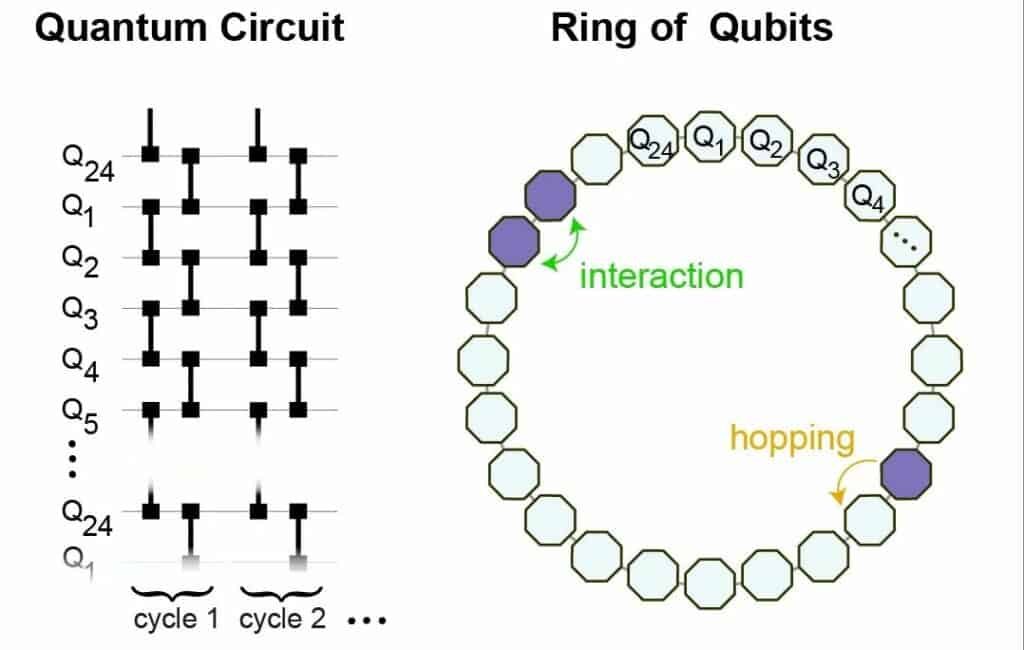
Photons propagating in a vacuum usually do not interact with each other, but in superconducting quantum systems, photons confined to quantum bit sites can interact with each other.
Thus, in a recent study published in Nature, scientists have used a ring of 24 superconducting quantum bits to carry microwave photons, achieving a bound state of microwave photons that can exist stably in chaos and interact with each other.
Since there is no interaction between photons, even if a single photon jumps, the accumulation of phase has no effect on the overall equilibrium state of the system, much less the formation of bound states.
Once the photons interact with each other, the accumulation of phases will be changed, resulting in the disruption of the system resonance to form a bound state.
By applying fSim gate operations to adjacent quantum bits on a superconducting quantum circuit, a ring circuit with 24 interconnected quantum bits is realized, while photons on the quantum bits can leap and interact with adjacent photons to form bound states.
In addition, the researchers found that the bound state exhibits the properties of a particle, with energy and momentum.
The bound states in quantum-producible systems are usually very unstable and even more fragile in chaotic systems.
However, when the ring structure of the quantum circuit was adjusted to a gear structure, they found that the bound states can still be stable in this non-accumulable quantum chaotic system.
The researchers believe that this may be related to the preheating of the quantum system, and they will further investigate the connection between preheating and productability in the future.
This work also demonstrates that quantum processors can bring about a paradigm shift in the study of many-body quantum dynamics.
